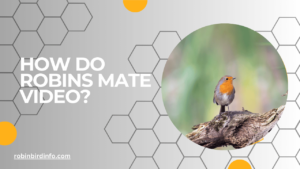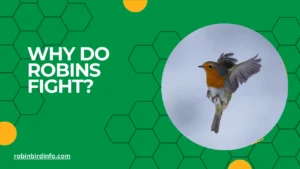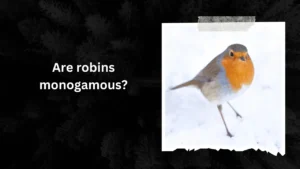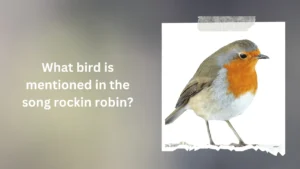Have you ever witnessed a Robin puffed up with vibrant red feathers, fiercely defending its patch of your lawn?
Or perhaps you’ve been captivated by the melodic warbling echoing through your backyard. These seemingly contradictory behaviors – territorial aggression and beautiful song – are both crucial parts of a Robin’s fascinating love life.
But how exactly do these cheerful songbirds find their mates and raise their young? What goes on behind the scenes of those charming chirps and territorial displays?
Understanding Robin mating rituals unveils a surprising world of strategy, cooperation, and sometimes, even a touch of drama. This blog post delves into the intricate world of Robin romance.
We’ll explore the captivating courtship dances, the meticulous nest-building process, and the incredible dedication both parents show to their developing chicks. So, settle in and prepare to be surprised by the fascinating complexity of a Robin’s journey from a solitary songster to a devoted parent!
Contents
Mating Rituals
The mating season for Robins typically begins in early spring. Male Robins attract females through their melodious songs and elaborate courtship displays. These displays include wing-fluttering, bowing, and offering food to the female.
Once a pair bond is formed, the male and female Robin work together to establish a territory and build a nest. The male often sings to defend their territory from other males.
Nest Building
After pair formation, the female Robin builds a cup-shaped nest using various materials, such as twigs, grass, and mud. The nest is typically placed in a sheltered location, such as a tree, shrub, or man-made structure.
The choice of nest location is crucial for the survival of the young. Robins prefer locations that offer protection from predators and harsh weather conditions. They may also consider the availability of food sources and the proximity to water.
Egg Laying and Incubation
Once the nest is complete, the female Robin lays a clutch of 3-5 eggs. The eggs are pale blue-green in color and are incubated by both parents.
The incubation period typically lasts around 12-14 days. During this time, the parents take turns incubating the eggs, keeping them warm and protected.
Raising Young
After the eggs hatch, the young Robins, known as nestlings, are completely dependent on their parents for food and warmth. Both parents work tirelessly to feed the nestlings, bringing them insects, worms, and berries.
As the nestlings grow, they develop feathers and begin to practice flying. Eventually, they will fledge the nest and become independent.
Challenges and Threats

Robin populations face numerous challenges, including predation from cats, snakes, and other birds of prey. Habitat loss due to urbanization and deforestation can also impact Robin breeding success.
Climate change can disrupt migration patterns and breeding seasons, affecting the availability of food and suitable nesting sites. Additionally, the use of pesticides can harm Robin populations by reducing the availability of insect prey.
Conclusion
The mating behavior of Robins is a fascinating aspect of their life cycle. Their complex courtship rituals, diligent nest building, and devoted parental care contribute to the survival of their offspring.
By understanding the challenges they face, we can take steps to protect Robin populations and ensure their continued presence in our backyards.
It’s important to create bird-friendly environments, minimize the use of pesticides, and protect natural habitats. By doing so, we can help these beloved birds thrive and continue to bring joy to our lives.
FAQ’s
Do Robins mate for life?
While Robins can form strong pair bonds, they may not mate for life. Factors like habitat quality and food availability can influence the duration of their partnerships.
How often do Robins breed in a year?
Robins typically breed once a year, but in some regions with favorable conditions, they may raise multiple broods.
What time of year do Robins mate?
The breeding season for Robins usually begins in early spring, with the specific timing varying depending on geographic location and weather conditions.
How long does it take for Robin eggs to hatch?
The incubation period for Robin eggs is typically around 12-14 days.
What do baby Robins eat?
Adult Robins feed their young a diet of insects, worms, and berries.
How long does it take for Robin chicks to fledge?
Robin chicks usually fledge the nest around 13-15 days after hatching.








